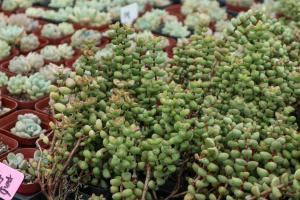Can You Bring Oleanders Plant in Pots to Go Dormant
Oleanders are popular landscaping shrubs or small trees with beautiful and fragrant flowers. They are also hardy and can thrive in different climates and conditions. If you grow oleanders in pots, you may wonder if you can bring them to go dormant in winter, especially if you live in a region with freezing temperatures. Let's explore the possibilities and the best practices for overwintering oleanders in pots.
Understanding the Dormancy of Oleanders
Like many plants, oleanders go through a period of dormancy, which is a state of reduced growth and metabolism that allows them to conserve energy and survive during adverse conditions. For oleanders, dormancy typically occurs in late fall or winter, when daylight hours are short, temperatures drop, and water availability decreases. During dormancy, oleanders shed their leaves and slow down their processes until the weather warms up and spring arrives.
The Challenges of Overwintering Oleanders in Pots
While oleanders are resilient plants, growing them in pots can present some challenges for overwintering, especially if you live in a region with harsh winters. Some of the issues to consider are:
- Pots may not provide enough insulation to protect the roots from freezing.
- Pots may dry out faster than the soil in the ground, leading to dehydration and stress.
- Pots may constrain the growth of the roots, limiting their nutrient uptake and vitality.
- Oleanders in pots may be more vulnerable to pests and diseases, as they lack the natural defense mechanisms of the soil and microbes.
Tips for Overwintering Oleanders in Pots
Despite the challenges, you can successfully overwinter oleanders in pots if you take some precautions and follow some tips. Here are some guidelines:
- Choose a sheltered spot: Place the pots in a location that is protected from the wind, but still gets some sunlight. A south-facing wall or an unheated garage or shed can work well.
- Mulch the pots: Add a layer of mulch around the pots to insulate the roots. You can use straw, leaves, or compost, but avoid using too much, as it may trap too much moisture and promote rot.
- Water sparingly: Oleanders in pots need less water during dormancy, as they are not actively growing. Water them only when the soil is dry to the touch, and avoid overwatering or letting the pots sit in standing water.
- Prune lightly: Before the onset of dormancy, remove any dead or diseased branches and shape the plant if needed. However, don't prune too much, as it may induce new growth that is vulnerable to frost damage.
- Monitor for pests and diseases: Check the plants regularly for signs of pests or diseases, such as aphids, spider mites, leaf spot, or mildew. Treat any issues promptly with organic or chemical remedies, as the plants' defenses are weak during dormancy.
When to End the Dormancy and Resume Growth
As spring approaches, you may wonder when to end the dormancy of your oleanders in pots and resume their growth. While every plant may have different timing and cues for emergence, here are some general tips:
- Wait until the danger of frost is over: Oleanders are sensitive to frost and may suffer if exposed to freezing temperatures. Wait until the weather is consistently above freezing before taking the plants out of dormancy.
- Gradually resume watering: Once the plants show signs of new growth, gradually increase their water supply and fertilize them with a balanced, slow-release formula. Avoid using too much fertilizer, as it may burn the roots or cause excessive growth.
- Monitor the light and temperature: As the days get longer and warmer, move the pots to a more sunny and exposed location, but avoid exposing them to scorching heat or direct sun for too long. Also, be aware of sudden temperature changes or fluctuations, which can stress the plants.
By following these tips, you can bring your oleanders in pots to go dormant and survive the winter, and enjoy their beauty and fragrance for many seasons to come.

 how many times do yo...
how many times do yo... how many planted tre...
how many planted tre... how many pine trees ...
how many pine trees ... how many pecan trees...
how many pecan trees... how many plants comp...
how many plants comp... how many plants can ...
how many plants can ... how many plants and ...
how many plants and ... how many pepper plan...
how many pepper plan...































